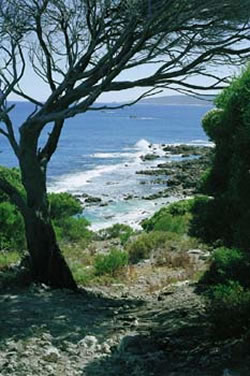Safety and Emergency

In the event of an Emergency
The Police Service is the lead agency for all search and rescue operations statewide. They are the first contact point if someone believes they have an emergency situation.
Once called, the police will mount a medical or lost rescue operation, usually involving the State Emergency Service.
During the instigation of a rescue, any other agencies (P&W Services, Friends of the Cape to Cape Track, local caving group etc.) that can assist may be called in to assist.
Please ring the closest police station listed below:
Other numbers listed below are to be used if the police number cannot be reached:
The Police Service is the lead agency for all search and rescue operations statewide. They are the first contact point if someone believes they have an emergency situation.
Once called, the police will mount a medical or lost rescue operation, usually involving the State Emergency Service.
During the instigation of a rescue, any other agencies (P&W Services, Friends of the Cape to Cape Track, local caving group etc.) that can assist may be called in to assist.
Please ring the closest police station listed below:
- Augusta 9758 1575
- Margaret River 9757 2222
- Dunsborough 9755 3744
- Busselton 9754 9555
Other numbers listed below are to be used if the police number cannot be reached:
- Life-threatening emergency Any mobile phone 112
- Life-threatening emergency Other phones 000
- Hospital: Augusta 9758 1502
- Hospital: Margaret River 9757 0400
- Hospital: Busselton 9752 1122
- Parks and Wildlife Service District Office, Busselton 9752 5555

Community Protection Prescribed Burning
The Parks and Wildlife Services periodically undertakes prescribed burning activities within the Leeuwin Naturaliste National Park adjacent to the Cape to Cape Track. The purpose of these burns is to firstly
provide strategic protection against damaging wildfire to surrounding community assets and secondly to protect, maintain and enhance biodiversity values and ecological processes within the burn area.
Information is is generally available to walkers, from P&W Services on the day of the walk. Walkers can obtain information on the prescribed burning program by ringing the Parks and Wildlife Services Office at Kirup on 97316232 or contact P&W Services at http://www.dpaw.wa.gov.au
When P&W Services page appears select Park Alerts and then Emergency W.A.,
Alternatively, phone 97525555
PRINT THIS PAGE OUT AND TAKE A COPY WITH YOU!
The Parks and Wildlife Services periodically undertakes prescribed burning activities within the Leeuwin Naturaliste National Park adjacent to the Cape to Cape Track. The purpose of these burns is to firstly
provide strategic protection against damaging wildfire to surrounding community assets and secondly to protect, maintain and enhance biodiversity values and ecological processes within the burn area.
Information is is generally available to walkers, from P&W Services on the day of the walk. Walkers can obtain information on the prescribed burning program by ringing the Parks and Wildlife Services Office at Kirup on 97316232 or contact P&W Services at http://www.dpaw.wa.gov.au
When P&W Services page appears select Park Alerts and then Emergency W.A.,
Alternatively, phone 97525555
PRINT THIS PAGE OUT AND TAKE A COPY WITH YOU!

Walk Safely... Tread Softly.
Please Tread Softly
- Take adequate drinking water (at least 2 litres, or more, if overnighting.
- Wear appropriate clothing (hat, sunscreen, waterproof etc.)..
- Carry a first-aid kit.
- Tell someone where you are going and how long you expect to be.
- Beware of rips & undertows (if swimming), slippery rocks & large waves.
- Watch where you tread; snakes are common though rarely seen.
- Do not shelter under overhangs; coastal limestone cliffs have fragile edges.
- In the event of wildfire, move to, or stay on the coast.
- Beware of deep & swift flowing water at creek crossings
- Loosen backpacks before crossing.
Please Tread Softly
- Stay on the Track.
- Use only fuel stoves at bush campsites.
- Where no toilets provided, bury human waste at least 100m away from water or the track.
- Remove all rubbish.
- Be courteous to other track-users.
- Respect private property.
- Do not disturb native plants and animals.
- Plan & prepare your walk carefully (see publications).